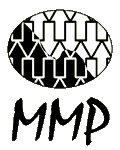Study Design
The data contained in the various MMP databases have been gathered using an approach that borrows from anthropological and sociological research methods. In particular, our study employs the Ethnosurvey approach, which combines the techniques of ethnographic fieldwork and representative survey sampling to gather qualitative as well as quantitative data. The two kinds of empirical data are compared throughout the study to yield results of greater validity than either ethnography or a sample survey could provide alone. This method was designed to provide a picture of Mexican-US migration that is historically grounded, ethnographically interpretable, quantitatively accurate, and rooted in receiving as well as sending areas.
Each year, during the winter months (when seasonal migrants tend to return home), the MMP randomly samples households in communities located throughout Mexico. After gathering social, demographic, and economic information on the household and its members, interviewers collect basic immigration information on each person’s first and last trip to the United States. From household heads and spouses, we compile detailed year-by-year labor history and migration information; in addition, for household head migrants, we administer a detailed series of questions about their last trip to the U.S., focusing on employment, earnings, and use of U.S. social services.
Following completion of the Mexican surveys, interviewers travel to destination areas in the United States to administer identical questionnaires to migrants from the same communities sampled in Mexico who have settled north of the border and no longer return home. These surveys are combined with those conducted in Mexico to generate a representative binational sample.
|



